The refugee crises the world forgot
'If it is fresh, if the media are there, then you have a name, like this little boy on the beach. Ten years later, you have forgotten the name. There is nobody there, and there is very little money'
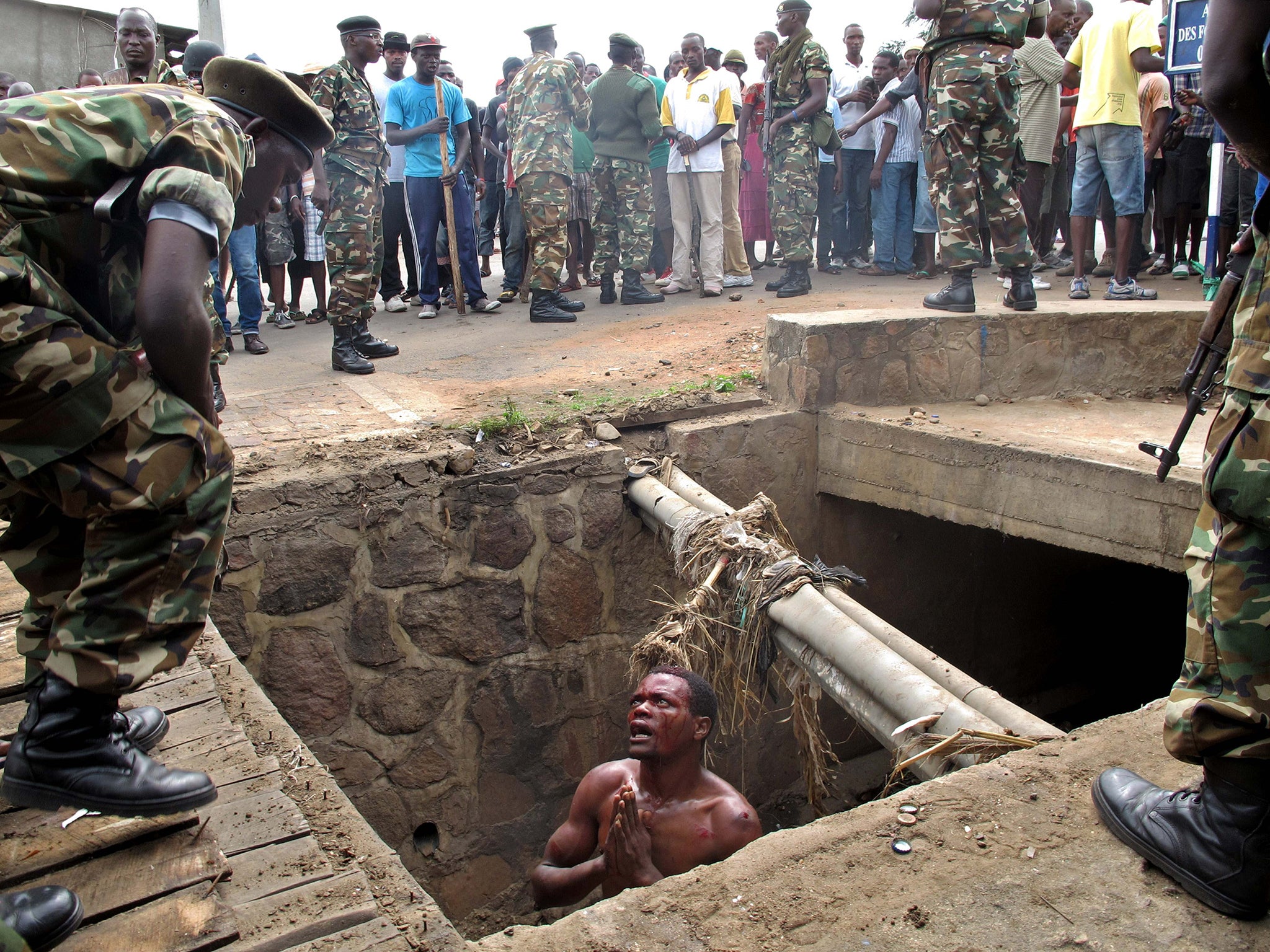
Your support helps us to tell the story
From reproductive rights to climate change to Big Tech, The Independent is on the ground when the story is developing. Whether it's investigating the financials of Elon Musk's pro-Trump PAC or producing our latest documentary, 'The A Word', which shines a light on the American women fighting for reproductive rights, we know how important it is to parse out the facts from the messaging.
At such a critical moment in US history, we need reporters on the ground. Your donation allows us to keep sending journalists to speak to both sides of the story.
The Independent is trusted by Americans across the entire political spectrum. And unlike many other quality news outlets, we choose not to lock Americans out of our reporting and analysis with paywalls. We believe quality journalism should be available to everyone, paid for by those who can afford it.
Your support makes all the difference.One year after the death of Alan Kurdi saw concern for the plight of Syrians surge across Europe and the West, leading humanitarians are urging the world not to give up on the world’s forgotten refugee crises.
The UN says there are now 65.3 million people worldwide who have had to flee their homes to escape conflict, the most since records began and possibly since the end of the Second World War.
But in a world where 34,000 people are forcibly displaced every single day, a tiny fraction of the causes behind this global crisis receive the attention, political focus and financial support they deserve.
Working with the UN refugee agency and the Norwegian Refugee Council (NRC), The Independent has put together this list, just a selection of the refugee crises around the world that are starved of attention and as a result drastically underfunded.
When a country stops protecting a group of people and the international community looks the other way, it’s “a disaster for the people living in those areas”, says Richard Skretteberg, a senior advisor at NRC who has been reporting on and then trying to help the world’s crisis-hit areas for more than 30 years.
Each of the crises below is different, but they are united by the fact that they have been going on for a long time, stagnating because of a lack of political will to fix things.
Conflicts are like the refugees themselves, says Mr Skretteberg. “If it is fresh, if it is new, if the media are there, then you have a name, like this little boy on the beach.
“Ten years later, you have forgotten the name. There is nobody there, there is no media, and there is very little money.”
Above all, it requires brave political leaders to identify the challenges and do something about them, Mr Skretteberg said. Donald Trump, for instance, should realise “tens of thousands of Mexican kids need protection, they don’t need a wall”.
“We must show through our words that this is a humanitarian challenge, and not use these challenges to divide people in our own countries,” he said. “We should unite to make the maximum effort to solve these situations.”
South Sudan - ‘a silent crisis’
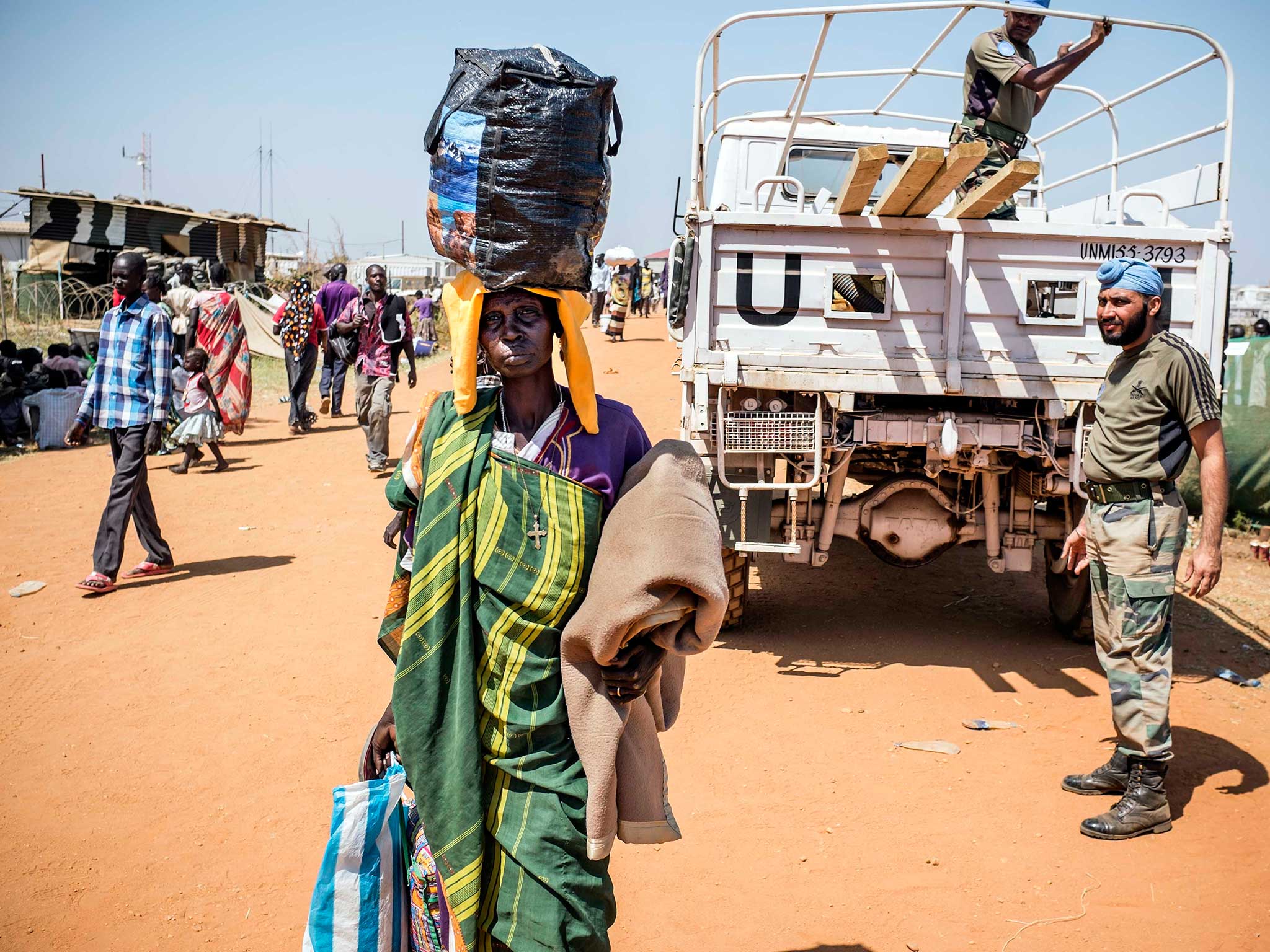
The story of how fighting returned to South Sudan in July, and with it reports of horrific violence towards international aid workers, made headlines all over the world.
But the forgotten crisis here is that fighting along tribal lines has been going on in what is now South Sudan for decades, with a devastating impact on the local population.
Incredibly, one in every five people in South Sudan have been forced to flee their homes, including 1.66 million displaced internally within the country and up to 800,000 becoming refugees elsewhere.
“Right now, a huge population is fleeing South Sudan to Uganda,” says Kennedy Mabonga, regional director for NRC in the Horn of Africa. “They are fleeing all sorts of abuses, torture, deliberate attacks from the military.”
But they are not just fleeing for their lives, he says. Because of the entrenched fighting, there has been no time to cultivate crops, the economy has been hit by devastating hyperinflation - and there is widespread flooding caused by the El Nino weather effect.
It’s a triple whammy, on top of the ongoing conflict.
NRC says that right now, 1,500 people a day are fleeing just into Uganda. That’s similar to the daily arrivals across the entire continent of Europe in 2016.
And because men are invariably caught up in the fighting, 87 per cent of those fleeing are women and children.
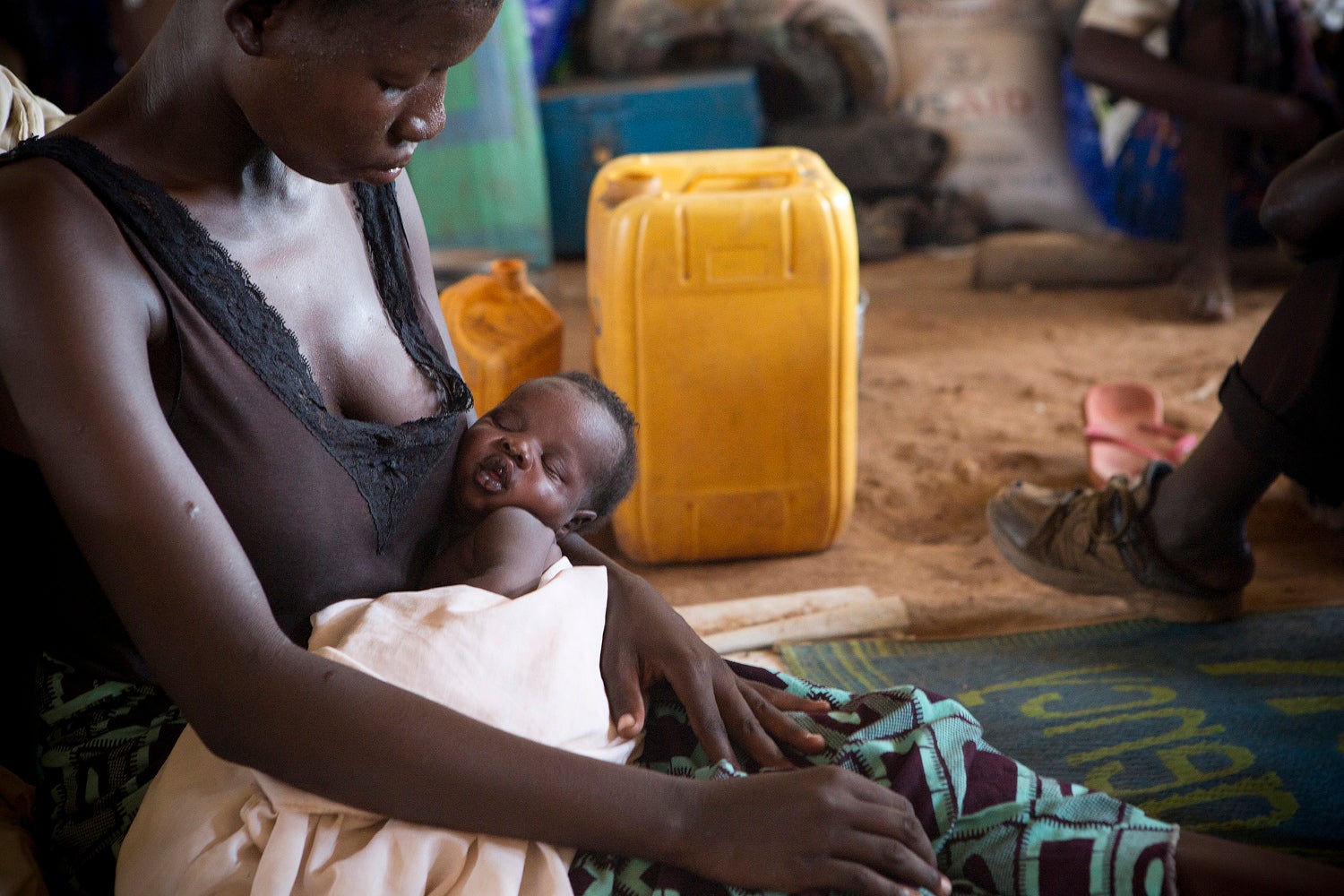
Alice Digamma, 24, sits on the tent floor with her two-week-old baby. Her son is one of many children born a refugee. The newborn is breathing heavily. It is blazing hot inside the tent.
Alice was heavily pregnant when she escaped and crossed the border, after her husband left her for another wife. Now she dreams of a peaceful life and a secure future for her son.
“I'm so tired of the war. I cannot stand to be afraid anymore. Now, I think about my boy's future. I hope he will be fine,” she says.
While the number of refugees in South Sudan’s neighbouring country Uganda is increasing, war continues to ravage the world's youngest country.
South Sudan is also an unusual case in the context of global refugee crises, in part because the migration flows appear to go both ways.
The tribal nature of the conflict means that while some ethnic groups are fleeing across the northern border into Sudan, other groups that are being persecuted in Sudan are making the journey in the opposite direction.
NGOs estimate that despite the complete breakdown of its core infrastructure, South Sudan is itself hosting more than 260,000 refugees from other countries. Compare that to the wealthy European nations that have offered homes to no more than a couple of hundred asylum-seekers each.
“It is a silent crisis,” Mr Mabonga says. “We are talking about huge numbers – half a million arriving in a small country - but the world doesn’t see this. And as a result, funding is not adequate to keep them going.”
Yemen - ‘leaving is not an option’

More so than any other forgotten crisis on this list, the conflict in Yemen is made worse by the presence of so many “interested parties” among the international community.
While everyone seems to have a stake in who ends up controlling what is left of the country, the plight of the people who actually live there is under-reported and under-resourced.
The UNHCR estimates that over 82 per cent of the population of the country, 21.2 million people, are now classified as requiring urgent humanitarian assistance. That ranks it as the worst humanitarian crisis in the world.
Though not as longstanding as that of South Sudan, the crisis in Yemen is not new. People have been displaced by fighting there at least since 2004, and the number of displaced people has now hit 3.1 million.
But it is particularly remarkable for the fact that the people of Yemen appear so reluctant to flee their homes, despite the lack of access to food and water, the constant threat of air strikes and the fluctuating front line between the Saudi-led coalition and the Iran-backed Houthi rebels.
As of July this year, only 179,661 people had fled to neighbouring countries. When the fighting got particularly bad, NGOs set up extensive facilities to receive refugees on the border – but hardly anybody turned up.
“Initially we thought they were being blocked from fleeing, but recently we found that is not the case,” says Mr Mabonga. “Their property is there, their lives are there, so they don’t see leaving as an option. Many Yemenis see this as a war they have to be there to fight. And they are willing to die.”
The Rohingya - ‘a very desperate situation’

One of the most persecuted minorities on the planet, the Rohingya Muslims are present in great numbers in two countries, Burma and Bangladesh, yet do not have their right to citizenship recognised in either.
The latest figures suggest there are 512,466 refugees from Burma in neighbouring countries, as well as 644,000 internally displaced in the country itself.
But greater numbers still live in informal settlements in Bangladesh, where their lack of acknowledgement from officials mean they are subjected to violence, abuse and police corruption.
“There is a complete lack of protection, both in Myanmar (Burma) and Bangladesh as well,” Mr Skretteberg says, “so they are in a very desperate situation, and they have been for several years now.”
This lack of protection makes the Rohingya very vulnerable to becoming victims of organised crime, and in 2015 the discovery of mass graves containing the bodies of Rohingya refugees on the border with Thailand made news headlines around the world.
There had been hopes among the international community that the return of Aung San Suu Kyi to Burmese politics might herald a sea change in the fortunes of the Rohingya people.
But with the military still maintaining control of almost all aspects it says relate to “internal security”, and Aung San Suu Kyi remaining silent on the issue, hopes for progress are fading.
Burundi - ‘wiping out a generation’
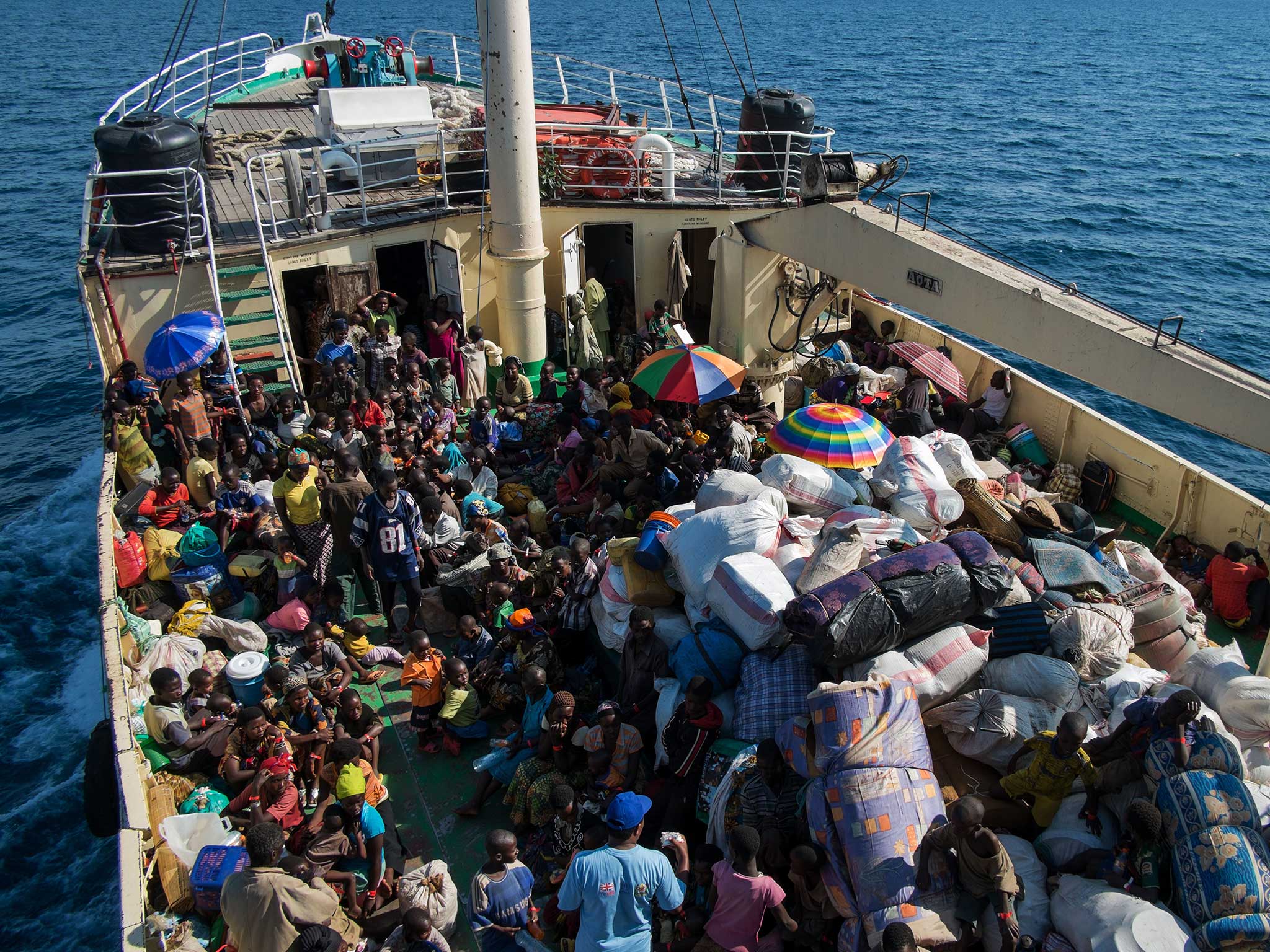
“We say South Sudan is a forgotten crisis, but compared to that Burundi is in the darkness. No one is talking about Burundi. But the atrocities there are just as serious,” says Mr Mabonga.
A tiny but densely populated country, Burundi has nonetheless seen more than 260,000 people flee in the year since it collapsed into political crisis. The UNHCR says it is preparing for 330,000 to have fled by the end of the year.
The population is divided into the Tutsi and Hutu ethnic groups, and like neighbouring Rwanda has a bloody history of ethnic cleansing and genocides during the 1970s and again in the 1990s.
Though there have been clashes, in the current crisis international observers are not yet talking in terms of genocide - but those arriving at camps in neighbouring Tanzania tell stories of people being killed for “belonging to the wrong group”.
What makes Burundi unique compared to the other crises on this list is the almost total lack of internally displaced people, numbering only a few thousand in UNHCR estimates.
That’s because it is such a small country - if a militia from an opposing ethnic group is allowed to run riot and decides it is after you, there is nowhere to run. There are no internal camps for IDPs, because they would likely be attacked.
Once again, women and children make up the majority of Burundian refugees, with men staying behind to try and protect the family home or else take up arms themselves.
“In the whole dynamic of conflicts in this region, children are still suffering most,” says Mr Mabonga. “If children remain, the chances of them being recruited by either side are very high. If they run away, they are not getting an education. What is the future for these countries, if no one has been educated to take over when peace returns? These conflicts are wiping out a generation.”
Central America/Mexico - ‘a protection crisis’
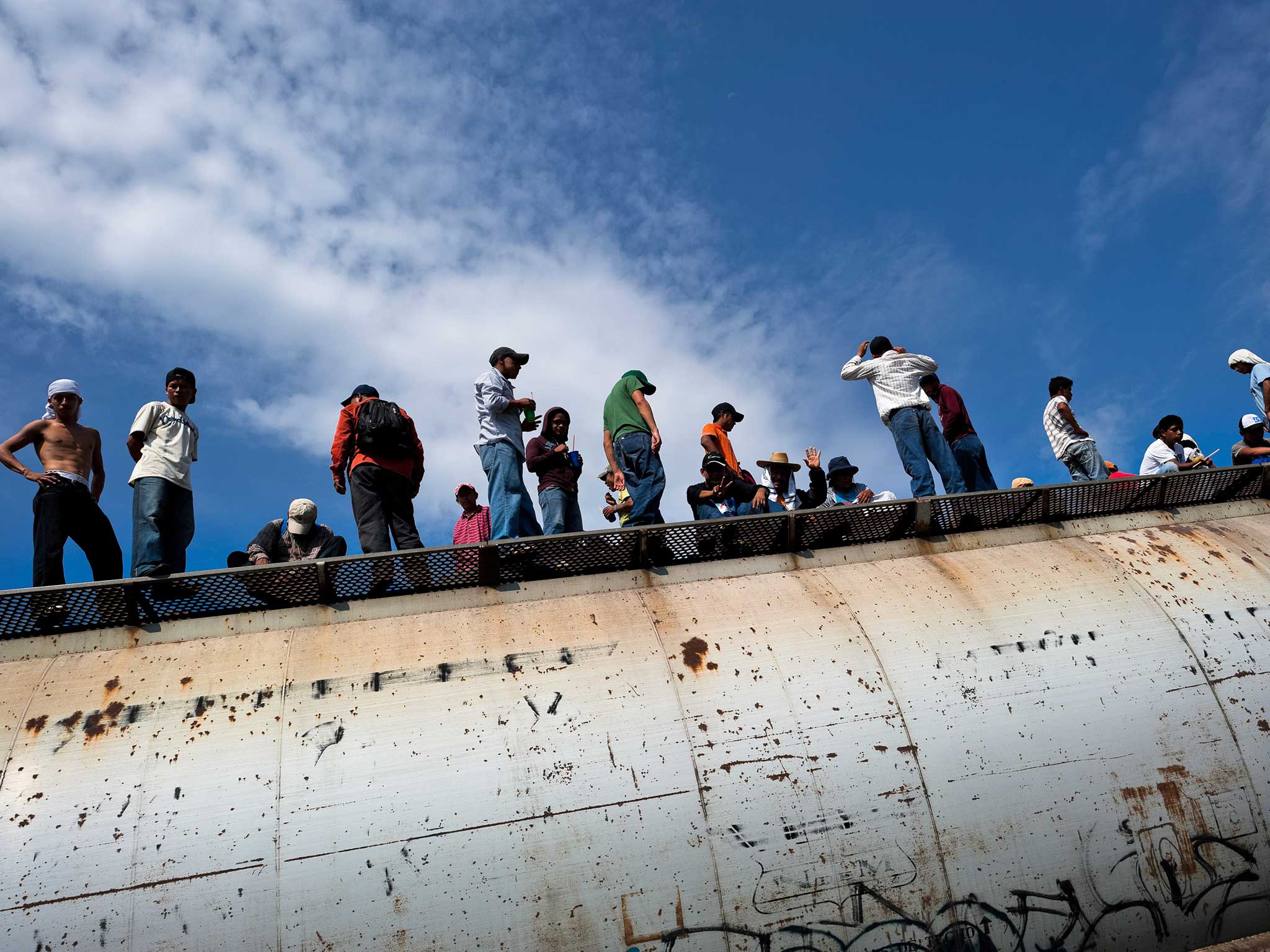
The UN says the number of people fleeing violence in Central America has increased to levels not seen since the region was hit by armed conflicts in the Eighties.
To the rest of the world, the numbers of refugees and displaced people forced to flee violence and persecution in the Northern Triangle (El Salvador, Honduras and Guatemala), as well as those fleeing Mexico into the US and trying to escape the now improving conflict in Colombia, may seem quite low.
But the figures belie a situation where tens, if not hundreds of thousands of people are forced to flee their homes because of weak state institutions and often drugs-related violence.
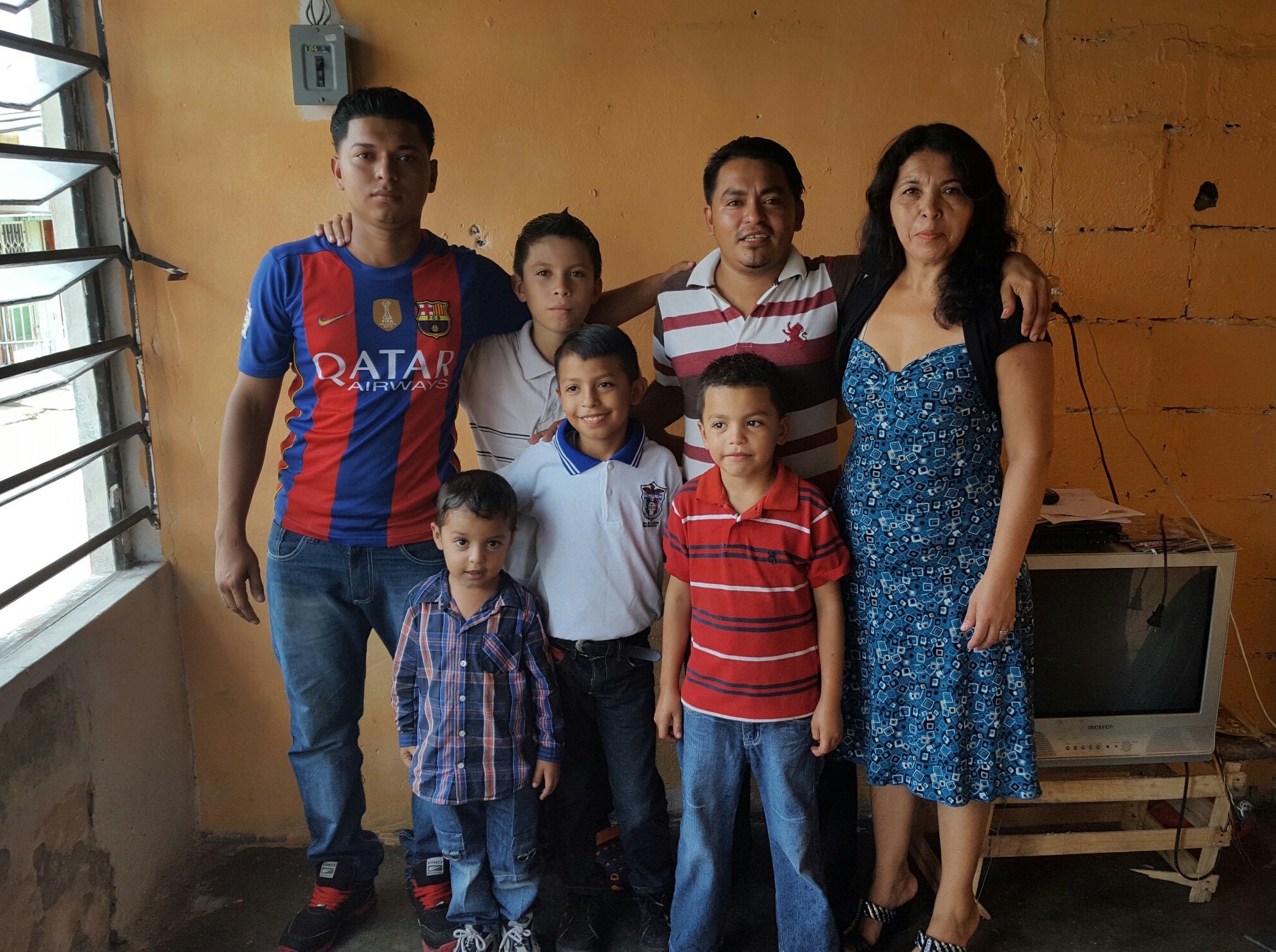
Rafael is the head of a family of five children, the youngest three years old. They fled Honduras and sought refuge in Tenosique, southern Mexico – Rafael came at the beginning of the year, and was joined by his family in April.
Rafael was threatened several times by mara, or street gangs operating in his neighbourhood. One day, as he picked up his son from his piano class, he witnessed a fight between two rival armed groups. Having seen the faces of the criminals, the only option was to run.
One night a mara group entered his house, his father went out to receive them on the patio, where he was assassinated by machetes. Rafael and his family broke the window and escaped, fleeing first to the neighbours and then a church nearby.
Going to the police was not an option; school was also seen as a dangerous place, where children were easily recruited and used as informants, or “banderinas”.
Rafael and his family displaced within Honduras several times after their initial flight, before finally fleeing to Mexico. Today, Rafael works in a bakery, delivery bread. His wife carries out informal domestic work. His priority is to make sure that his children have a roof above their hands, enough food and the chance to go school. One child works in a food shop, 2 children go to primary school and 2 to the kindergarten.
In April, spokesperson Adrian Edwards said the UNHCR now regards the situation in Central America as a "protection crisis".
Last year a UN report found that around 50,000 of the migrants entering the US from Central America were children, and “urgent action” was required to give them protection.
“Who is a migrant and who is a refugee in central America? That's very essential,” says Mr Skretteberg.
“There is without doubt displacement because of violence, they are threatened by these gangs, and they are fleeing because they need protection. In that sense they are not migrants, they are refugees.
CAR - ‘central only in name’

Central African Republic (CAR) is “central only in its name”, says Mr Skretteberg. “It is one of the most neglected countries in the world and has been so for decades.”
Covering a vast swathe of mineral-rich and fertile land, the country has been in an chronic state of instability and violence since achieving its independence from France in 1960.
It was plunged into turmoil once again in 2013 with clashes between the Muslim Seleka umbrella militant group and the Christian “anti-balaka” militias which rose up against it.
Despite its size, CAR has a tiny population of around 4.6 million people. The UN says the equivalent of one tenth of the population - 467,800 at latest count - are refugees in other countries, while there are more than 380,000 internally displaced.
Presidential elections in February 2016 were hailed as a positive step but, Mr Skretteberg says, the development has led to a withdrawal of international funding at a time when CAR needs it most to rebuild a nation.
CAR is ranked 187 out of 188 on the UN’s development index and there are fears that if it is ignored once again, a regression into violence is inevitable.
“It is crucial that the international community learns from previous mistakes,” Mr Skretteberg says. “The international presence and focus should be there consistently, not in and out.
“Please stay in that country, stay there for years, not only if there is a peace agreement or if there has been an election. This country really needs to stabilise, and that is not done in a year or two.”
Join our commenting forum
Join thought-provoking conversations, follow other Independent readers and see their replies
Comments